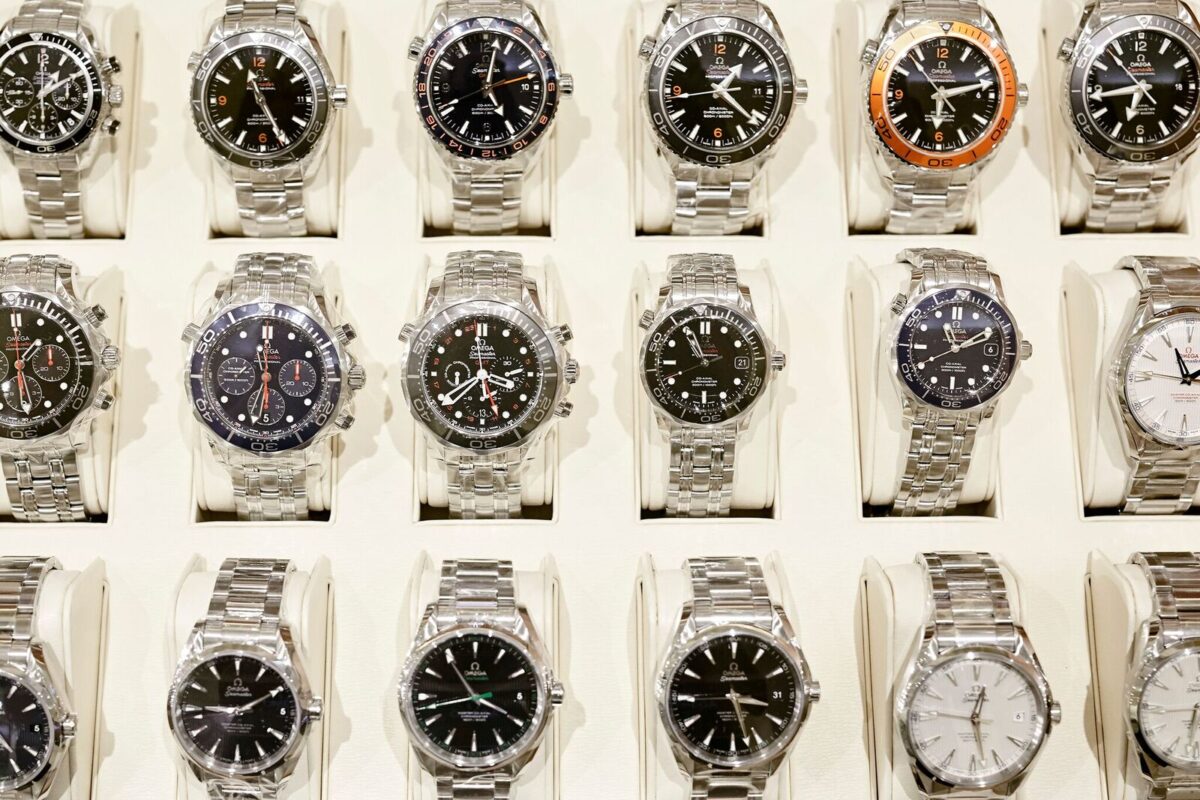The Swiss timepiece is a pertinent tool to any man’s wardrobe arsenal. Going well beyond its basic duty of just telling the time, Swiss timepieces are renowned for adding flair and an extra dimension of elegance to any look whether it be a dapper suit or the latest in luxe streetwear.
The OMEGA Globemaster is a formidable name in these Swiss watchmaking circles. Highly regarded for their ability to be one of the best looking and most versatile watches on the market, the classic masculine appeal of the Globemaster continues to forge ahead long after its inception in the 1950s.
In order to compile a comprehensive guide to buying the perfect Swiss watch, we recruited some expert help from Stella Shi, a true purveyor of watchmaking at Swiss Concept and a graduate of OMEGA’s Grand Ambassador program in Switzerland.
Watch and learn, gentleman.
Why The Swiss Watch
Just as Karl Benz created the first ever automobile back in 1886, the Swiss were the first to be involved in watchmaking back in the 16th century. It is this intangible heritage that has earned Switzerland an unyielding reputation for making the world’s finest watches whilst simultaneously setting the standard for quality.
Shi explains that Swiss inventors also helped move along the history of the watch, with particular advancements in automatic or self-winding watches.
“Swiss watchmaking has developed as a part of history and is deeply embedded in the Swiss culture. This effectively differentiates it from any other watchmaker from around the world.”
“It’s a way of expressing individuality as well as perfecting a mechanical craft. It would be difficult to find another country today with the reputation for watchmaking that Switzerland possesses.”
Most Swiss watches feature intricate mechanical movements which consist of over one hundred parts that are assembled by hand from dedicated craftsman. Material construct comes into play here with an array of jewels, different alloys and even carbon fibre all making up the price of a Swiss watch.
Of course, this means that as the materials become more exotic, the watches will also become more expensive to purchase and look after. An important point to bear in mind is that Swiss watches will retain an intrinsic value that most luxury watches will have regardless of advancing technology like the smartwatch.
What To Look For In A Timepiece
Swiss watches are widely considered a statement piece or representation of success and status for men. Looking for the perfect Swiss timepiece fundamentally comes down to personal taste and the breadth of technology that a wearer seeks. One should consider the type of lifestyle they lead before investing in any sort of Swiss watch, as each one has its intended purpose and corresponding features.
Think along the lines of the type of movement, the case material, the power reserve, the water resistant rating, the dial design and the case size. All of these major factors play into buying the perfect Swiss watch that’ll suit your lifestyle best.
For a watch like the OMEGA Globemaster, taking the iconic design of yesterday and merging it with the technological demand of today means that it is fully capable of handling the rigours of everyday wear whilst retaining its sophisticated look. This is a fine example of where men should start.
“A watch is like an exotic car that you can take to meetings. Watches are one of the few items that a man can wear that he believes display true character,” Shi adds.
As such, the key areas to address when looking for a Swiss watch comes down to four factors:
Craftsmanship: Look at the overall degree of craftsmanship as this can determine whether or not it’s what you need. Swiss watches can range from basic specifications all the way to extreme, moving into the region of hundreds of thousands of dollars.
Tradition: Most Swiss watch brands carry with it an illustrious reputation which can date back as far as the 18th century. It’s important when looking for a Swiss watch to consider what each brand represents as they will often follow a specific design language defined by their past. Think flight inspired watches compared to a classic formal piece – two very different looks. Hence, the right look for a wearer can often come down to the watch brand itself.
Technology: Swiss watches have picked up a host of advancements over the century and it is up to the buyer to understand which one of these features will serve them best. Chronographs, Tourbillons, world timers and watches with special indicators are just some examples of the breadth of technology that can be found today. Again, this can determine the final price of the watch so it’s imperative to understand how the technology can serve you.
Innovation: Innovation is an extension of the aforementioned technology. Each Swiss watch brand determines how much of the latest technology they want to implement in their timepieces and this ultimately ties back to their tradition and core values. In the Swiss watchmaking world, innovation it doesn’t just mean slapping on a screen and connecting it to your smartphone though. Think along the lines of the implementation of the latest alloys, composite materials and advanced manufacturing methods.
How To Look After A Swiss Timepiece
Due to the precision nature of Swiss watches, it is absolutely imperative that they receive regular servicing in order to maintain performance, reliability, appearance and value.
Tip #1: Shi says that Swiss watches should come in for a complete service at a qualified local retailer every 4 to 5 years.
Tip #2: Between servicing times, wearers should follow general rules such as avoiding unnecessary shock and chemicals. Cleaning the watch after swimming in the sea and avoiding temperature fluctuations (i.e. saunas) is also something wearers should be very weary of.
Tip #3: For added peace of mind, Shi says that local sales associates like herself will often spend a good amount of time going over general care rules applicable to a timepiece during the time of purchase. So ask questions and contact them if you’re uncertain on any care tips.
How To Style Swiss Watches
The vast array of Swiss watches to choose from means that they can be easily worn with a range of men’s clothing.
Dressier formal watches are catered more towards the sophisticated gent – a man who often works on a public front, whilst classic watches are aimed at the versatile man who requires a piece that can take on multiple duties. For the active man who’s often found outdoors in sportswear, a bulkier Swiss timepiece with a rubber band will suit the look perfectly whilst adding a healthy dose of masculinity.
When it comes to matching the watch with the outfit, there really isn’t many limitations. Shi says that most men prefer to own more than one watch so that they can wear the most appropriate timepiece to compliment their outfit and occasion.
One for formal duties, one for work, one for play. It’s as simple as that. If this is not an option, look at the different straps (steel, NATO strap, leather, rubber) available from your local Swiss retailer and places like Swiss Concept.
How Much To Spend
It’s crucial to understand exactly what you need from a timepiece before putting your mortgage on one. As a general rule, a first-time Swiss watch buyer should look in the region between three to five thousand dollars.
This however can vary drastically as it is entirely dependent on age and individual financial situations.
A perfect example of a watch which sits between the first-time buyer and seasoned buyer price bracket is the OMEGA Globemaster, a watch which offers a host of features and signature Swiss design at the AU$7,000 mark.
Rules Of Intrinsic Value
There are some things that money cannot buy and that’s the essence of Swiss watchmaking that lives in every piece. For OMEGA, it’s a process which has earned an image of purist design, innovation and production at the highest level.
Shi believes that Swiss watchmaking is a craftsmanship that is both tedious but extremely unique.
“A Swiss brand’s heritage and reputation is essential for the continuity of this aspect of Swiss culture; it prevents the technological takeover of the watchmaking art form.”
This is an art form that can never be sold in a Swiss timepiece and an art form that OMEGA continues to practice today.
Photographed by Peter Van Alphen
 1/9
1/9
 2/9
2/9
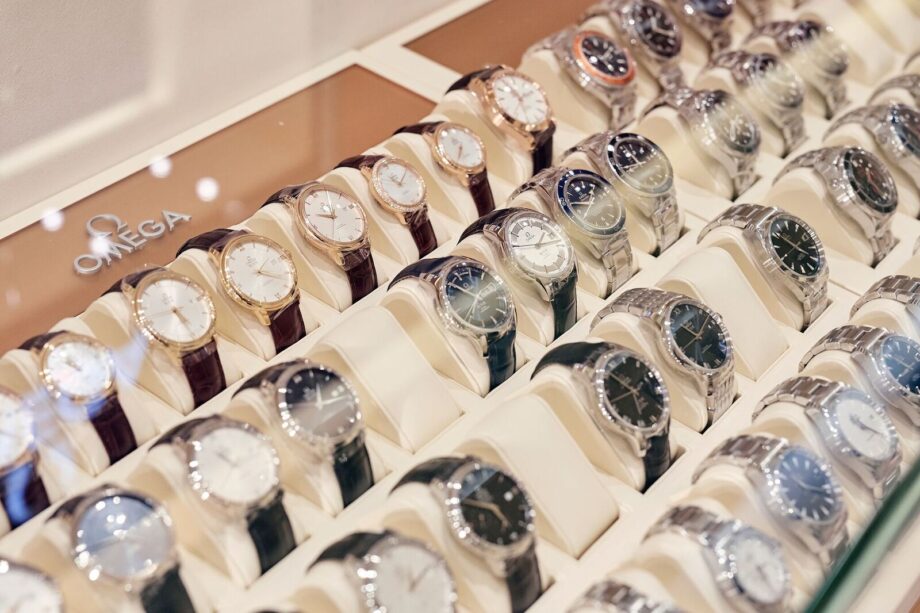 3/9
3/9
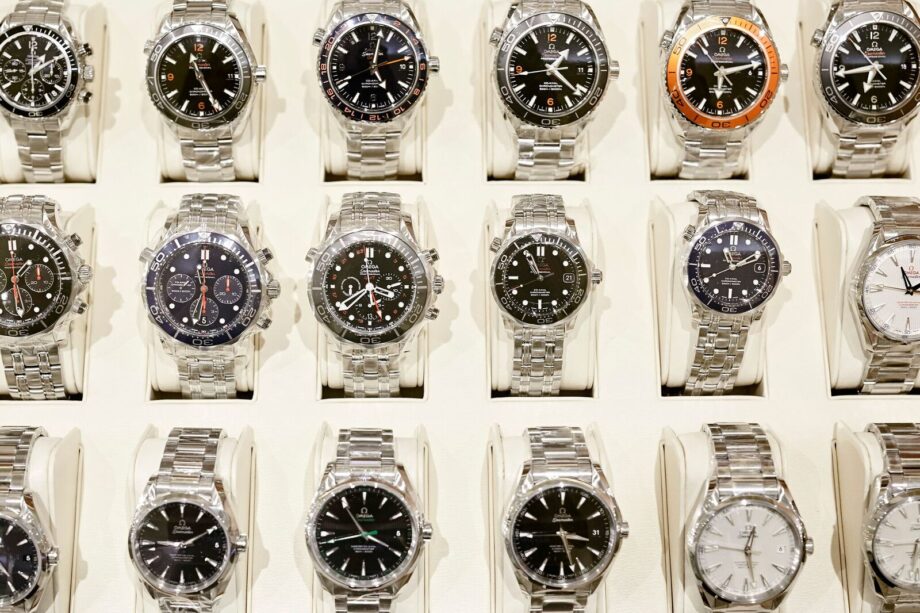 4/9
4/9
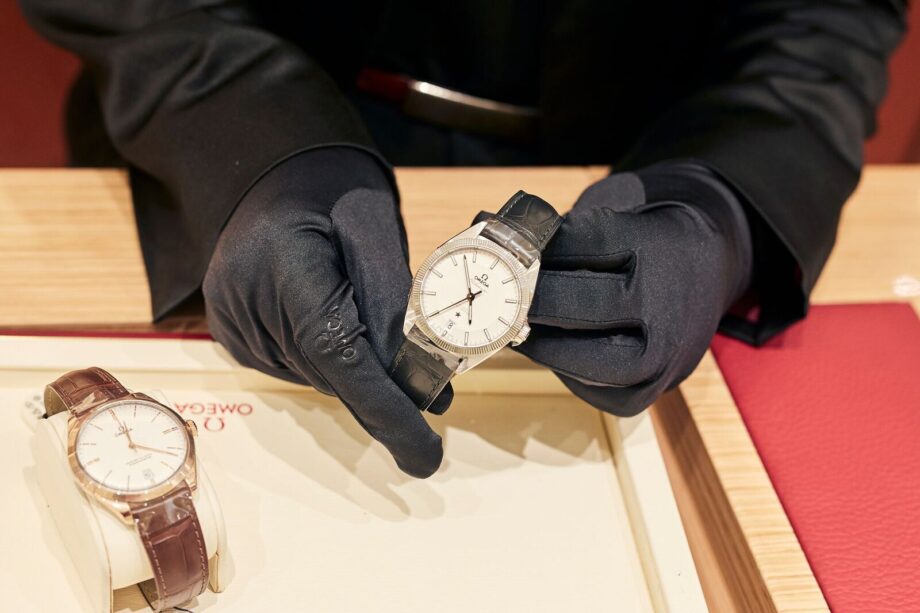 5/9
5/9
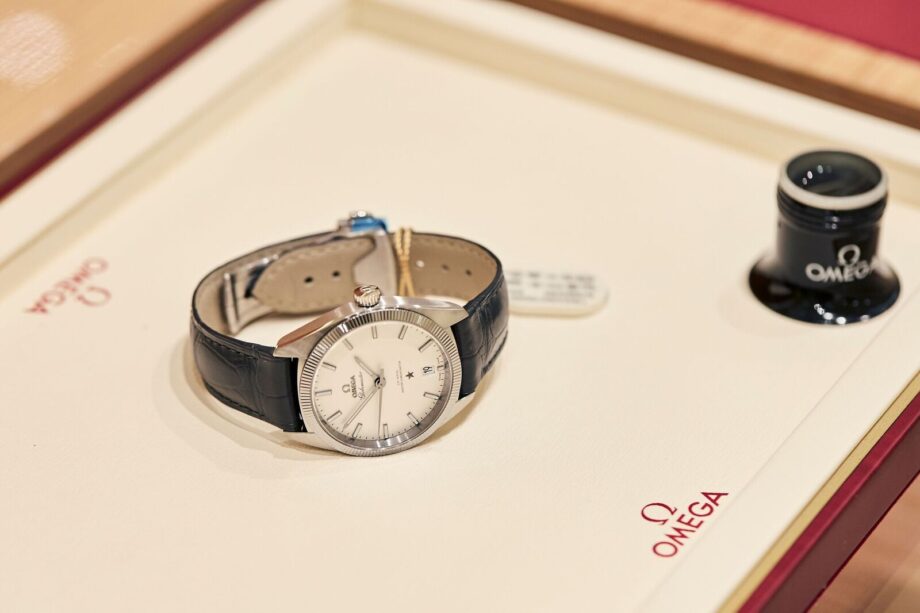 6/9
6/9
 7/9
7/9
 8/9
8/9
 9/9
9/9
